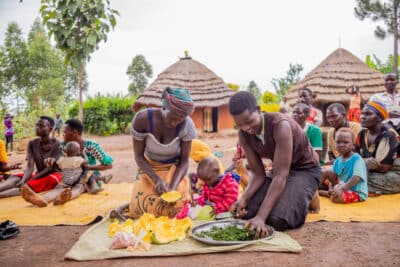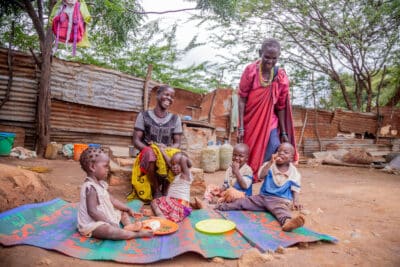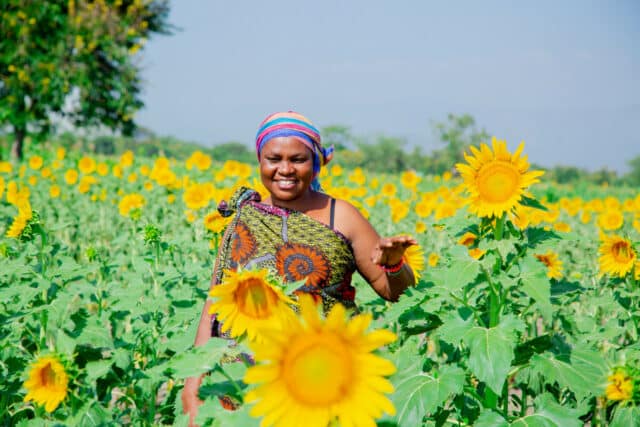News
2 December 2019
Farm Africa aquaculture project boosted jobs, incomes and food security
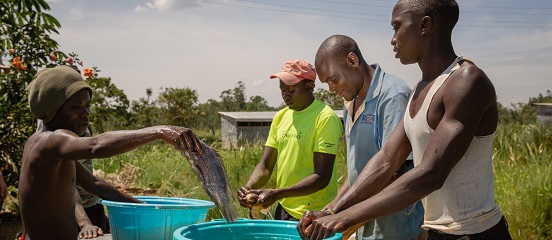
A workshop held in Nairobi last week to conclude international NGO Farm Africa’s Kenya Market-led Aquaculture Programme (KMAP) highlighted significant increases in pond farming profits, production and productivity amongst the fish farmers taking part in the project.
The workshop summarised the key outputs of KMAP, which ran from 2016 to 2019 and supported more than 1,100 fish farmers in 14 counties in west and central Kenya, made possible with funding from the Embassy of the Kingdom of the Netherlands in Kenya.
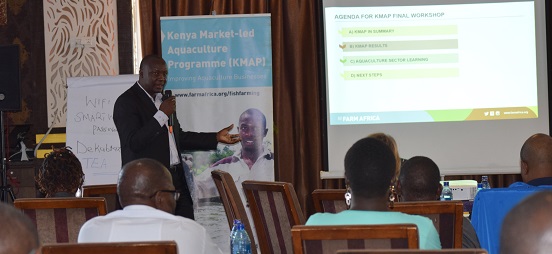
KMAP made key contributions towards the development of fish farming as a competitive industry in Kenya by successfully piloting models, building capacity for improved fish farming practices and pushing for the introduction of conducive policies that have contributed considerably to the development of the aquaculture sector.
To increase youth involvement in aquaculture and alleviate the existing high youth unemployment rate in the country, KMAP introduced the youth aquaculture agent model to increase farmers’ access to technical and business advice, as well as create linkages between input providers, farmers and the market.
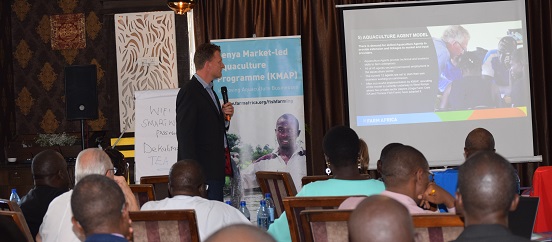
Farm Africa Team Leader for the KMAP project Arnoud Meijberg (pictured above), who led the KMAP team, commented: “The youth extension model has resulted in a 70% revenue increase for the 1,114 direct project beneficiaries from start of the project in 2016 to November 2019. Upscaling of the aquaculture agent model is currently underway with two private sector players in West Kenya having adopted it.”
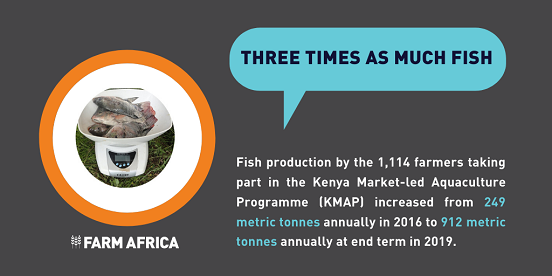
KMAP’s work to build fish farmers’ technical and marketing skills reaped huge rewards, with total production of the 1,114 farmers taking part rising more than threefold from 249 metric tonnes (MT) annually in 2016 to 912 metric tonnes (MT) annually in 2019.
This increased production is contributing towards closing the national 50,000 MT supply gap of fish in Kenya that was reported by the State Department of Fisheries, and underpinning the objectives of the Aquaculture Business Development Programme (ABDP), which is seeking to build up Kenyan aquaculture ventures by combining both public and private sector channels in 15 counties.

The productivity of tilapia farmers receiving support from Farm Africa nearly doubled over the lifetime of the project, rising from 0.31Kg/m² at baseline in 2016 to 0.61kg/m² at end term in 2019, while catfish farmers’ productivity saw more than a five fold increase, rising from 0.14kg/m² in 2016 to 0.82kg/m² in 2019.
The aquaculture project contributed to the advancement of best practices by collaborating with World Fish in conducting a growth trial, which revealed that the use of fingerlings weighing five grams and above can reduce the production cycle by up to two months, particularly in colder areas. In both warm and cool regions, the use of pelleted feeds was found to be more effective than mash, as the poor feed conversion ratio of mash slows down fish growth and eats into farmers’ profits.
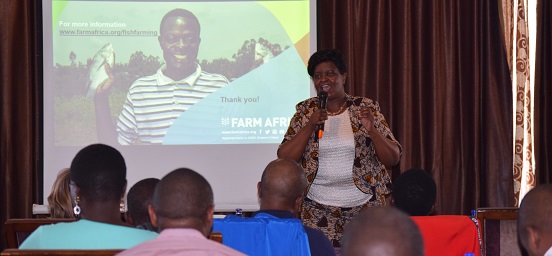
KMAP also tackled the problem of inconsistency in fish production significantly affecting farmers’ profitability by supporting the formation of farmer clusters with staggered production cycles. Together, the farmers in a cluster are able to ensure a continuous market supply of fish all year round.
To create an enabling environment for aquaculture operations by lowering the cost of production, KMAP has been actively involved in lobbying for the introduction of favourable policies at both the national and county government level.
At county level, Kakamega County enacted legislation to distribute subsidised inputs to farmers, a move that has stimulated private sector involvement in aquaculture. The project also contributed to discussions that led to the removal of the 5% fisheries levy on imported feeds.
KMAP also contributed to the policy request made through the Kenya Private Sector Alliance (KEPSA) to the national development implementation and communication Cabinet committee seeking to have import duty on aquaculture equipment waived.
Download Farm Africa’s 2019 Guide to profitable fish farming (PDF 7.6MB), which shares lessons generated from KMAP.
